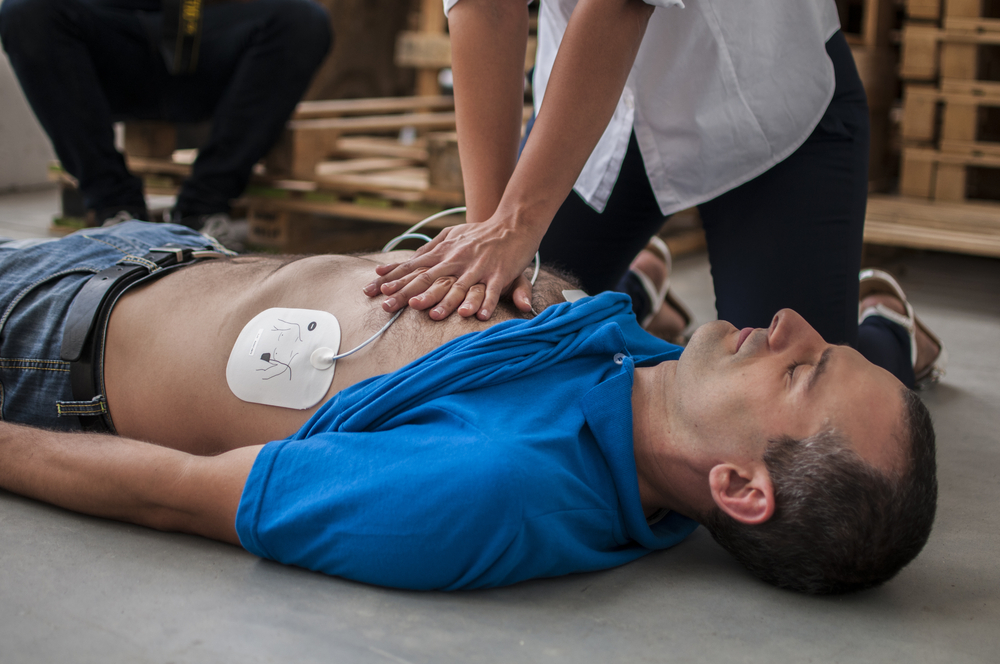First aid is the immediate care a sick or injured person gets. In some cases, it may be the only care a person needs. In others, first aid is a way to prevent a person’s condition from worsening and keep them alive until paramedics arrive or they are taken to the hospital.
The best way to prepare for these events is to get official first aid training. In the meantime, there are some basic life-saving steps that you can learn.
This article goes over the first aid steps to follow in 10 different situations and how to tell if more care is needed.

ABCs of First Aid
If someone is unconscious or unresponsive, the basic principle of first aid that you need to know is ABC: airway, breathing, and circulation.
- Airway: If someone’s not breathing, the first thing you need to do is clear their airway.
- Breathing: If you have cleared a person’s airway but they’re still not breathing, provide rescue breathing.
- Circulation: As you are doing rescue breathing, perform chest compressions to keep the person’s blood circulating. If the person is breathing but is not responsive, check their pulse. If their heart has stopped, provide chest compressions.
A simpler version of the ABCs is:
- Awake? If the person is not awake, try to wake them. If they don’t wake up, make sure someone is calling 911 and move on to the next step.
- Breathing? If a person is not awake and not breathing, start rescue breathing and chest compressions. Then, move to the next step.
- Continue care: When you call for help, follow instructions from 911 or continue treatment until an ambulance arrives.
Some first aid courses also include D and E:
- D can stand for: Disability assessment, deadly bleeding, or automated external defibrillator (AED). An AED is a device that shocks the heart to make it start beating again.1
- E can stand for: Examination (checking the person for signs of injury, bleeding, allergies, or other problems once you know they’re breathing and their heart is beating).
Where to Get First Aid Training
Taking a formal CPR class will help you become familiar with doing chest compressions, rescue breathing, and using an AED. You can find courses from the American Red Cross, your local community first responders, and online.
First Aid for a Stopped Heart

Cardiopulmonary resuscitation (CPR) is one of the most important emergency medical procedures that a person can know.
If a person’s heart is not beating, they could die. When a person is in cardiac arrest, doing CPR and/or using an AED could save their life.2
AEDs are available in many public areas and businesses. These first aid devices are made to be easy to use even if you have no training.
What to Do
If you think someone is in cardiac arrest, there are four steps you can take to help them.
- Find a person nearby. Make eye contact, point to them, and say: “Call 911.”
- Start doing chest compressions on the person who needs help. Using both your hands, push down hard and fast in the center of the person’s chest. Let their chest come back up naturally between compressions. Keep going until someone with more training arrives.
- If you’re trained in CPR, you can use chest compressions and rescue breathing.
- If it’s available, use an AED. However, do not put off doing chest compressions to go look for an AED. If possible, instruct someone else to go find the device and bring it to you.
First Aid for Bleeding

If someone is injured and bleeding, there are a few basics about how blood works that will be helpful for you to know.
The color of the blood and how it’s leaving the body can give you a sense of the extent of the injury:
- Capillaries: Bleeding from the smallest blood vessels (capillaries) looks like a trickle. This kind of bleeding usually stops on its own.
- Veins: A consistent blood flow and blood that’s a dark red color is most likely coming from the veins. This type of bleeding can range from mild to severe.
- Arteries: Arteries are the largest blood vessels and carry a lot of oxygen. If they are injured, bright red blood will spurt out. Blood can be lost very fast with this kind of bleeding.
Almost all bleeding can be controlled with first aid. If severe bleeding keeps going, a person can go into shock and may die.
What to Do
While it is important to stop bleeding, begin with the ABCs of first aid.
The next steps are to:
- Wash your hands or put on disposable gloves if you have them. This will protect you from infectious diseases like viral hepatitis and HIV/AIDS that can be spread in a person’s blood.6
- Rinse the wound with water.
- Cover the wound with a gauze or cloth (e.g., towel, blanket, clothing).
- Apply direct pressure to stop the flow of blood and encourage clotting (when blood naturally thickens to stop blood loss).
- Elevate the bleeding body part above the person’s head if you can.
- Do not remove the cloth if it becomes soaked. Removing the first layer will interfere with the clotting process and result in more blood loss. Instead, add more layers if needed.
- Once bleeding has stopped, put a clean bandage on the wound.
Get medical help if:
- The wound is deep
- The wound has widely separated sides
- The injury oozes blood after pressure has been applied
- The injury is from an animal or human bite
- The injury is a puncture, burn, or electrical injury
- You think there is arterial bleeding
- Blood is soaking through the bandages
- The bleeding is not stopping5
If you are taking the person to the hospital, make sure that you have someone else who can keep administering first aid while you drive.















2 Comments
John
Good
America Needs Nurses
Thanks
Comments are closed.